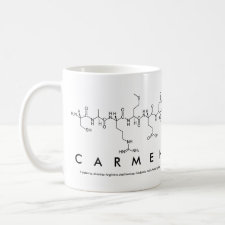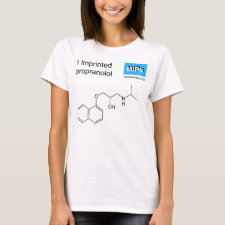
Authors: Lago MA, Grinberg VY, Burova TV, Concheiro A, Alvarez-Lorenzo C
Article Title: Ionic and Polyampholyte N-Isopropylacrylamide-Based Hydrogels Prepared in the Presence of Imprinting Ligands: Stimuli-Responsiveness and Adsorption/Release Properties.
Publication date: 2011
Journal: Journal of Functional Biomaterials
Volume: 2
Issue: (4)
Page numbers: 373-390.
DOI: 10.3390/jfb2040373
Abstract: The conformation of the imprinted pockets in stimulus-responsive networks can be notably altered when the stimulus causes a volume phase transition. Such a tunable affinity for the template molecule finds interesting applications in the biomedical and drug delivery fields. Nevertheless, the effect that the binding of the template causes on the stimuli-responsiveness of the network has barely been evaluated. In this work, the effect of two ionic drugs used as templates, namely propranolol hydrochloride and ibuprofen sodium, on the responsiveness of N-isopropylacrylamide-based hydrogels copolymerized with acrylic acid (AAc) and N-(3-aminopropyl) methacrylamide (APMA) and on their ability to rebind and to control the release of the template was evaluated. The degree of swelling and, in some cases, energetics (HS-DSC) of the transitions were monitored as a function of temperature, pH, and concentration of drug. Marked decrease in the transition temperature of the hydrogels, accompanied by notable changes in the transition width, was observed in physiological NaCl solutions and after the binding of the drug molecules, which reveals relevant changes in the domain structure of the hydrogels as the charged groups are shielded. The ability of the hydrogels to rebind propranolol or ibuprofen was quantified at both 4 and 37 °C and at two different drug concentrations, in the range of those that cause major changes in the network structure. Noticeable differences between hydrogels bearing AAc or APMA and between imprinted and non-imprinted networks were also observed during the release tests in NaCl solutions of various concentrations. Overall, the results obtained evidence the remarkable effect of the template molecules on the responsiveness of intelligent imprinted hydrogels.
Template and target information: propranolol hydrochloride, ibuprofen sodium
Author keywords: stimulus-responsive network, imprinted hydrogel, ionic and polyampholite hydrogels, propranolol, ibuprofen, controlled release



Join the Society for Molecular Imprinting

New items RSS feed
Sign-up for e-mail updates:
Choose between receiving an occasional newsletter or more frequent e-mail alerts.
Click here to go to the sign-up page.
Is your name elemental or peptidic? Enter your name and find out by clicking either of the buttons below!
Other products you may like:
 MIPdatabase
MIPdatabase









